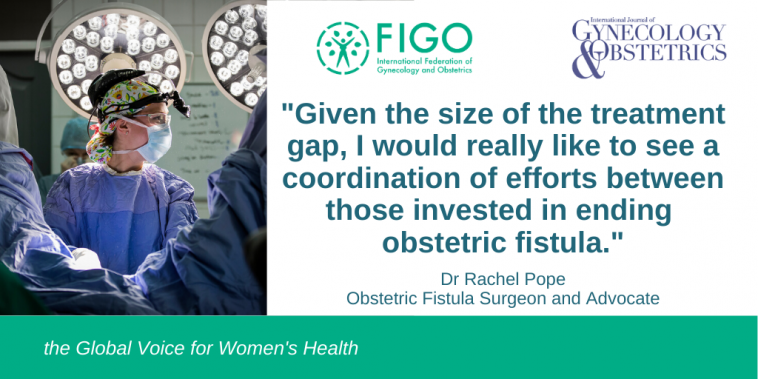Obstetric fistula: new research, new techniques
The latest IJGO supplement asks for honest answers to a complex question: just how far have we come in the prevention and treatment of obstetric fistula?

Back in 2007, FIGO’s academic journal led an inquiry to identify research needs and priorities for tackling prevention and treatment of this neglected public health and human rights issue.
Since then, the global community has taken many positive steps - from the UN General Assembly’s call to end obstetric fistula by 2030, to the FIGO Fistula Surgery Training Initiative’s own series of education and treatment milestones.
Now the Special Issue: Obstetric Fistula: Where we currently stand, jointly written by FIGO’s Fistula Surgery Training Initiative and the International Society of Obstetric Fistula Surgeons (ISOFS), draws on decades of clinical and programmatic expertise to put these milestones in context.
As part of our expert series on the new supplement, FIGO spoke to Dr Rachel Pope, Guest Editor, author and co-author about the critical role of research and collaboration to close the treatment gap.
“Our review article aims to assess the most relevant advances in surgical care of women with obstetric fistulas. It looks back at some of the history of developing the current surgical techniques, but most importantly, it includes some of the new techniques being developed to improve surgical outcomes.
Two of those techniques have been developed to repair particularly complex obstetric fistula injuries - the gracilis and Singapore flaps – and we discuss these in the supplement.
I hope this supplement will inspire innovation and new thinking in approaching obstetric fistula repair. While we have high success rates for simple cases, many women still struggle with urethral incontinence due to small bladder capacity, intrinsic sphincter deficiency and other causes.
For these post-surgical patients living with incontinence, life is much the same as still having a fistula. We have got to do better for these women who have already endured so much.
One of the greatest strengths of the FIGO Fistula Surgery Training Initiative is that it protects women seeking treatment for obstetric fistula by introducing standards. Through training and certifying surgeons, as well as supporting holistic care teams, many more women will receive surgery by a high-quality surgeon.
This should lead to more women being healed the first time around.
However, given the size of the treatment gap, I would really like to see a coordination of efforts between those invested in ending obstetric fistula. We need a classification system so that we can communicate our research better with one another, and we need more robust research to propel our field forward.
If we can train more high-quality surgeons, more women will receive effective care on the first attempt at repair. Simultaneously, obstetric care needs to improve, to prevent new cases developing.
It will only be through prevention and repair that this enormous gap in health equity will be closed.”